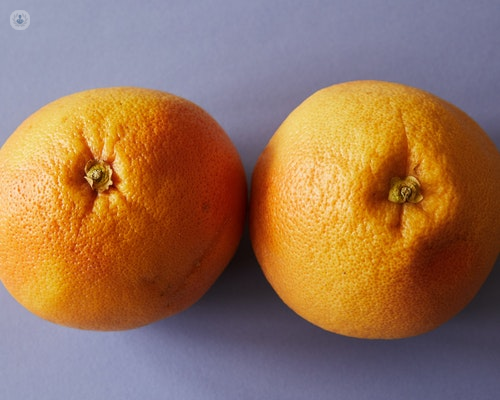Fat transfer to breast vs implants for augmentation- which is better?
Written by:Breast augmentation is a common procedure that women seek for numerous reasons. Two of the most common methods are fat transfer and implants. Ms Monica Fawzy, a consultant plastic surgeon with over 15 years of experience, compares these options for women considering this kind of surgery.

What are the common reasons for some women to opt for breast augmentation?
There are a multitude of reasons for women to seek augmentation, I tend to see different groups: a younger group who may have always been dissatisfied with their size in general or wish to correct an asymmetry. Another group presents after their breasts lose volume following breastfeeding, while the last group presents wishing for augmentation as a way to treat mild ptosis (sagginess of breasts).
What is the difference between implants and fat transfer breast augmentation?
Both methods achieve breast augmentation in different ways with different advantages and disadvantages. Breast implant augmentation uses silicone prostheses which come in a round or teardrop shape and may have a smooth or ‘textured’ outer shell. They are placed under the breast gland or under a thin layer of fascia between the breast gland and the muscle, or under the chest muscle.
Fat transfer augmentation uses the patient’s own fat that is collected from another area of their body by liposuction.
What happens during fat transfer breast augmentation?
The details of the different techniques to achieve this may vary somewhat, but the principle remains the same: fat is aspirated from another area of the body through a thin cannula, then it is processed to concentrate it, and it is then reinserted into the breast in numerous planes and deposited in extremely small deposits ‘per pass’. The transferred fat needs to pick up a blood supply from the native tissue, in order for it to survive and become incorporated into the breast tissue. That is why very small deposits are used in numerous tissue planes, in order to try and ensure that each deposit is completely surrounded by native tissue and hence with a blood supply.
What are the pros and cons of either option?
Answered below.
What is the best way to make a decision over which augmentation procedure to choose?
Fat transfer is an excellent option for those who are keen to use their own tissue and avoid foreign implants. However, a patient needs to be prepared for possible touch-up procedures, as a particular volume increase cannot be guaranteed because there is no way to guarantee the blood supply picking up each transferred fat cell.
In addition, for patients who require particularly large augmentations, it is important to know that they would need to have a staged approach to achieve this. However, the advantage of this technique is that, once the fat is incorporated, it behaves like native tissue and the patient can ‘forget about it’. There are a small number of patients who may not be eligible for this procedure, for example, if they have a very low body weight and would not have enough fat to donate from another area of their body or are smokers or diabetics.
Complications may include the loss of some of the transferred fat (necrosis or death of the fat cells that fail to pick up a blood supply), microcalcification (internal microscopic scarring of some of the fat cells which would give a particular appearance on a mammogram), and oil cysts (small cyst which may be palpable under the skin, and may require aspiration if it is troublesome. This occurs if a small number of cells fail to pick up a blood supply and form a cyst rather than dissolve entirely).
Implants on the other hand do guarantee a particular volume increase, and a large augmentation would be possible in one step. However it comes with its drawbacks such as the implantation of a foreign object, which many patients are increasingly unkeen on, and the relatively high possibility of needing a further surgical procedure in the future to deal with any complications such as:
- A capsular contracture - A thick layer of scar tissue around the capsule which may become hard and painful.
- Implant movement, rotation or rupture
- Breast implant-associated anaplastic large cell lymphoma BIA-ALCL - A very rare type of cancer of the blood cells that has more recently been shown to be associated with breast implants.
- Some patients also report ‘breast implant illness’ which is a challenging and poorly understood issue based on the published evidence to date.
Ms Fawzy is an expert in all types of cosmetic surgery including fat transfers, facelifts and plastic surgery. Visit her Top Doctors profile to request an appointment with her.


